Starting a pioneer missionary radio organization in the midst of the "Great Depression" was a giant leap of faith.
Clarence had tremendous vision, but virtually zero would go as he expected. Clarence planned that his party of seven would leave July 1st, 1931 flying in the mission's own plane. It would be just three; Clarence Jones, Eric and Ann Williams who traveled by boat in late August to set up the station.
Katherine Jones was expecting their third child, so on the advice of her doctor, she stayed behind.
Clarence had planned to start HCJB with a 5,000-watt commercial transmitter from the finest manufacturer, instead he got what he could afford, a 200-watt transmitter built by former CBS engineer Eric Williams in his garage. It would be nearly 10 years before HCJB would have high-powered transmitter.
Can You Think of a Better Place?
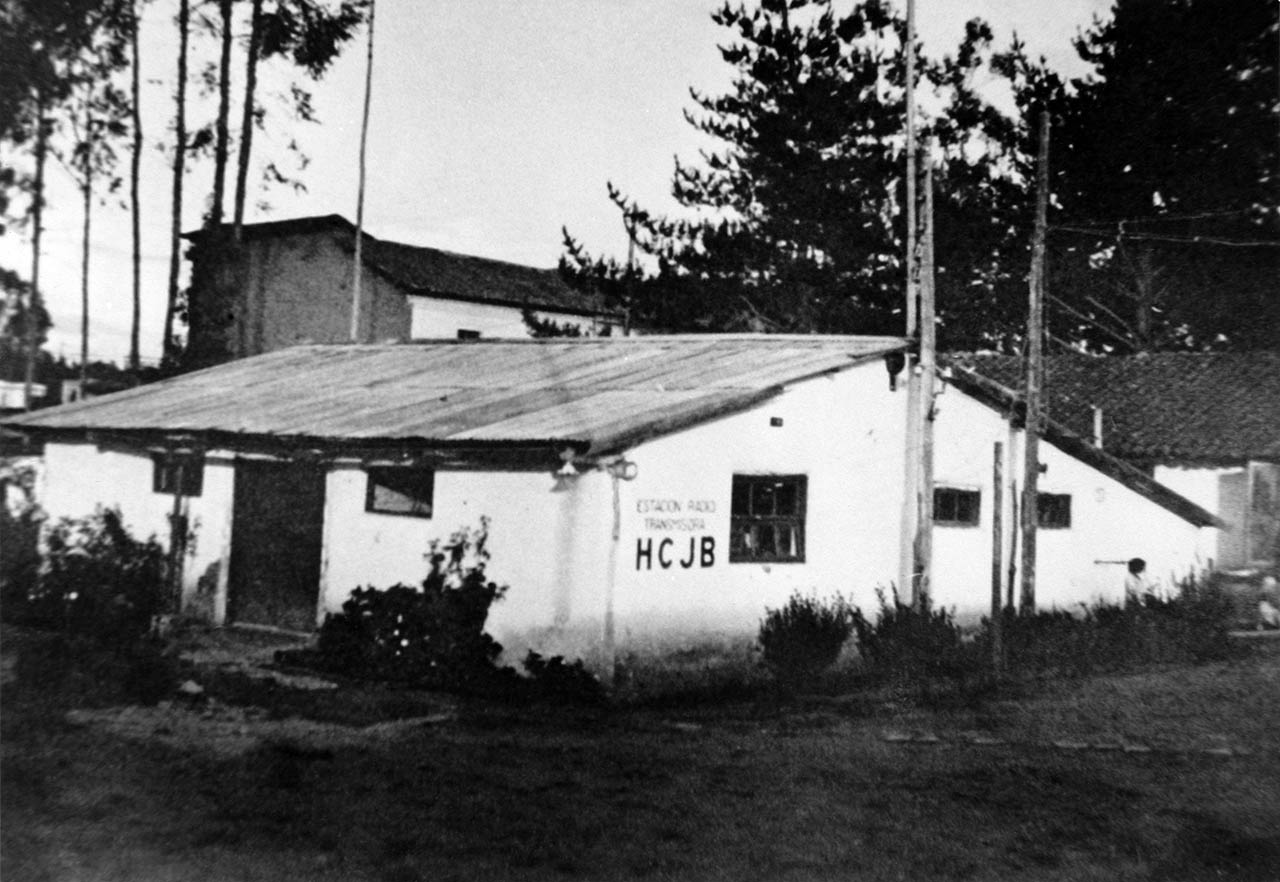 |
Radio station HCJB had a humble beginning. Money was tight and Clarence had to be resourceful. They needed a suitable place for the transmitter and for a workshop.
On the Quinta Corston property was an old sheep shed that consisted of little more than two mud walls and a thatched roof. Jones and his helpers closed in the open walls, added windows, poured a concrete floor, put on a tin roof and whitewashed the whole building.
Clarence told of a time when finances were so tight that he literally had no money to pay the $6.15 electric bill. The bank holding all of the Chicago Gospel Tabernacle's funds had folded. He went to transmitter building to pray and talk to God. As he looked around what had once been a sheep shed and the humbleness of it all, he thought about the successful radio ministry he had left in Chicago and the 5,000 people they had been ministering to each week at the Chicago Gospel Tabernacle. Was this all a mistake? Discouraged, Clarence cried out to God and God answered, “Can you think of a better place to broadcast about the Lamb of God than from a sheep shed?” God reminded Clarence again of Jeremiah 3:33, "Call unto me and I answer you and show you great and mighty things which you do not know."
In what can only be described as God's timing, God led missionary Stuart Clark to stop by, and upon hearing of the need, advanced Clarence the funds needed to pay the electric bill.
From that moment on, Clarence had no doubt that God was in this new missionary endeavor.
The Workshop
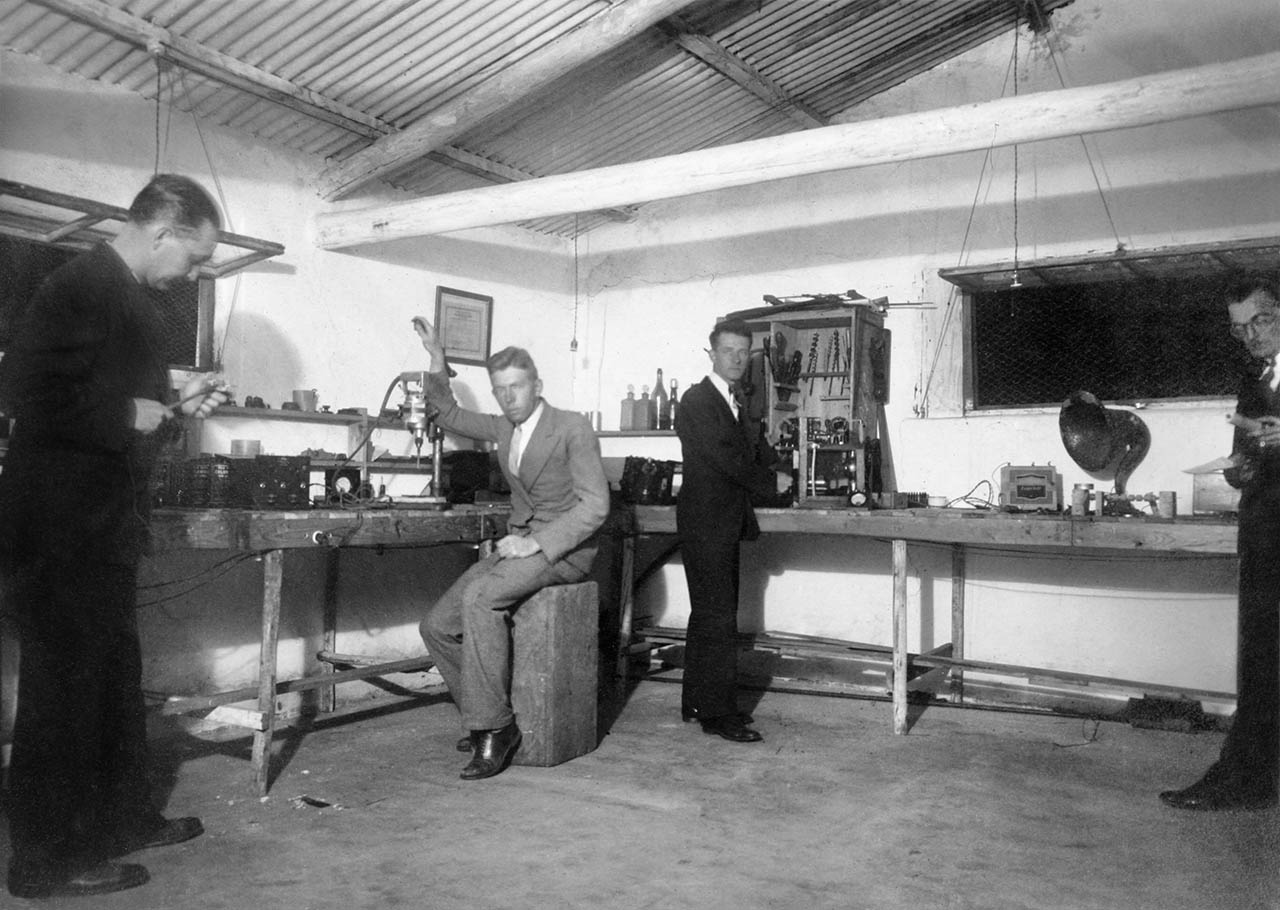 |
The sheep shed not only housed the station’s transmitter but also included a workshop where they hoped to build and repair radios.
With perhaps just 5 or 6 radios in the country when he arrived, Clarence figured there was enormous potential to sell radios to generate monies that he desperately needed to fund the station.
Clarence started the Quito Radio Agency to manufacture and distribute radios. He also arranged to sell the finest radios made at the time (by E.H. Scott), to wealthy land and business owners throughout Ecuador.
For One Sucre
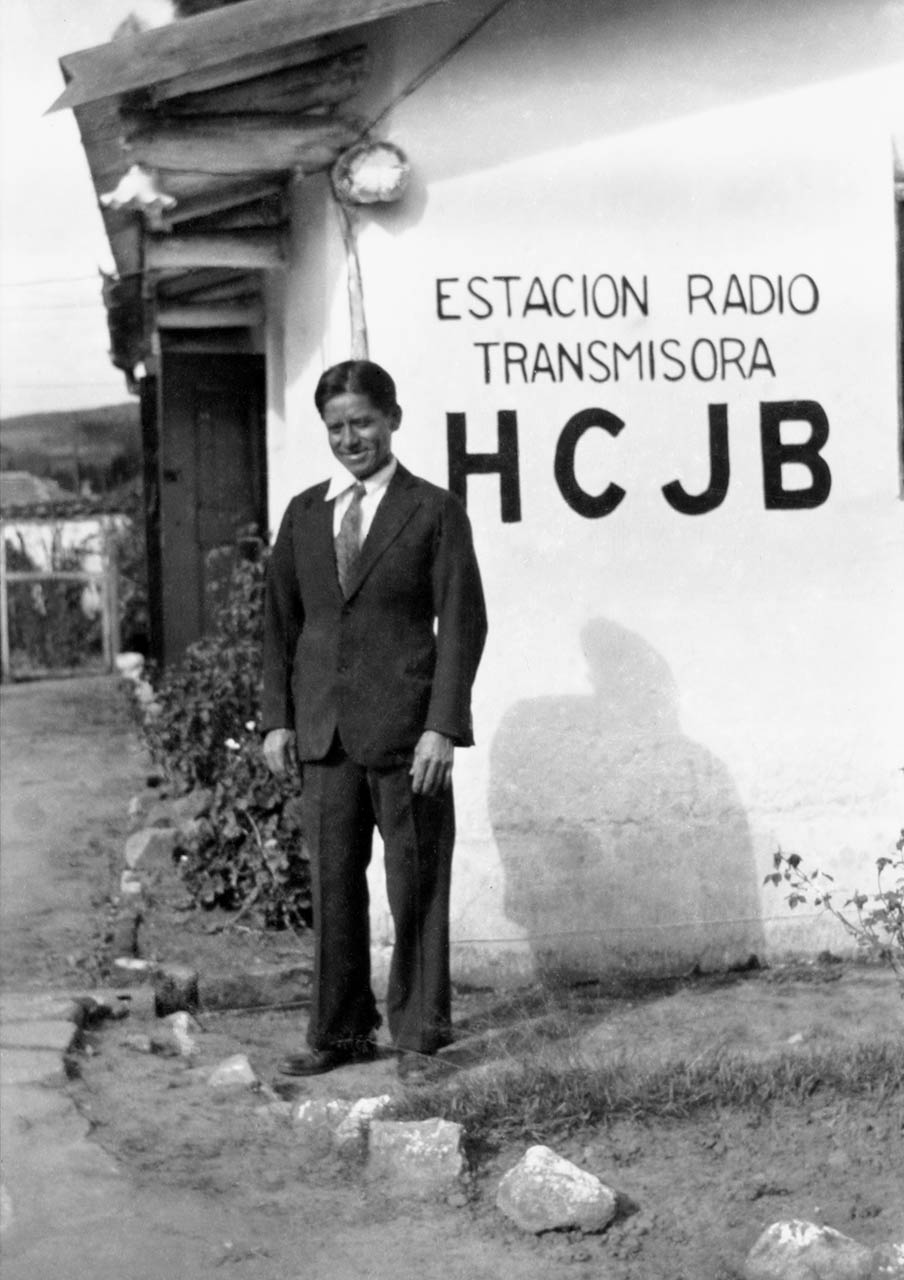 |
Clarence had envisioned the station with two stately steel towers supporting the antenna, and he drew this out in his early letters and logos. The reality was much more humble.
Clarence called the Quito Electric company and asked for the longest poles they had. Two 85 ft. poles arrived at Quinta Corston. Holes were dug 200 feet apart, pulleys attached to the top and the poles hastily put into place. Jones and Williams soon realized however that in their haste to raise the poles, they had not strung rope or anything through the pulleys, so they could raise the antenna to the top.
For one Sucre, (essentially a silver dollar) the gardener's son Pedro placed a rope between his teeth and shimmied up to the top of each pole. Pedro threaded the rope through the pulleys, which allowed them to lift the simple wire antenna into place.
More Than a Home
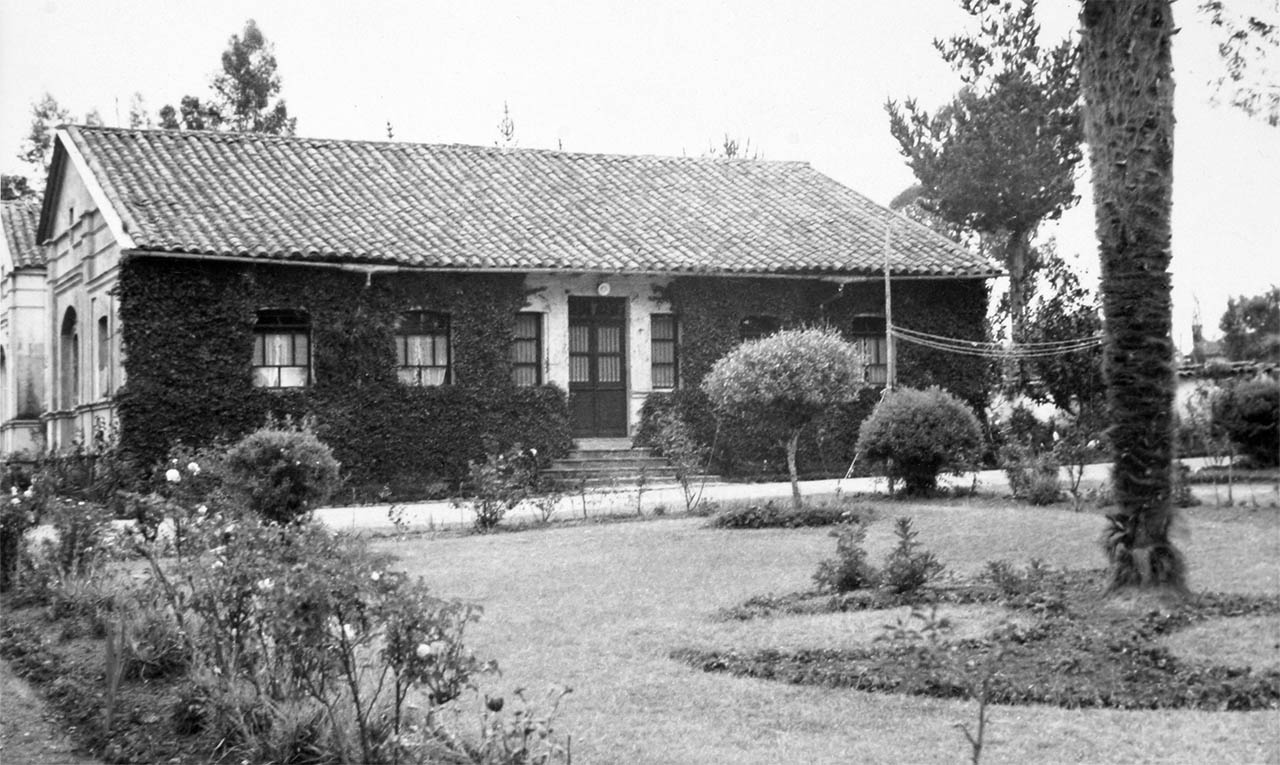 |
On the Quinta Corston property was an ivy covered “cottage” built by the former Scottish owner. The Jones’ shared their home with other staff and it was frequently crowded with guests.
The formal sitting room was used as the original HCJB radio studio. The adjoining enclosed porch was converted into the control. They cut an opening through the thick adobe wall and installed a single pane of glass to make it more soundproof.
The studio controls consisted initially of two simple switches, one for the record player and one for the single carbon microphone.
The First Program
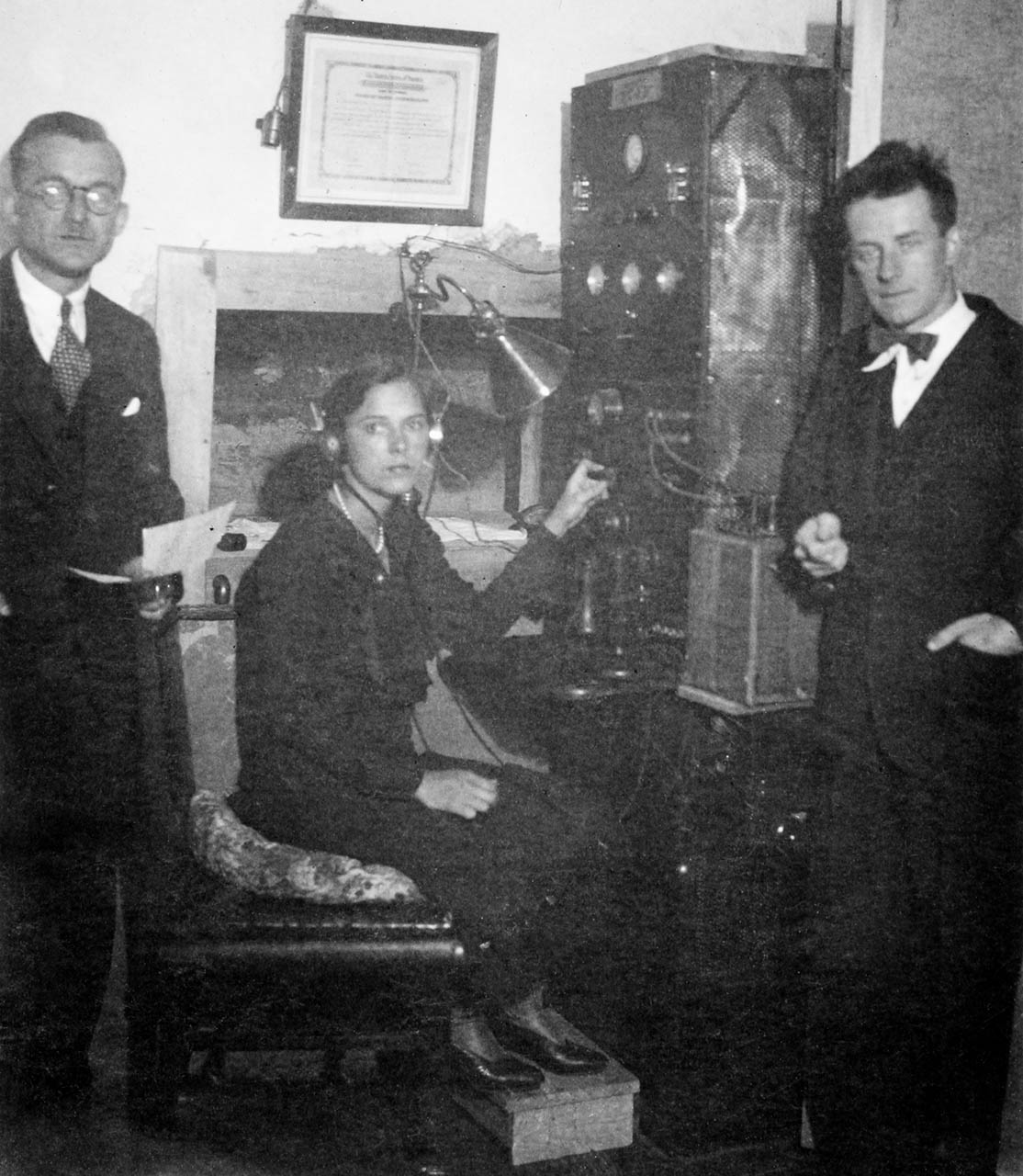 |
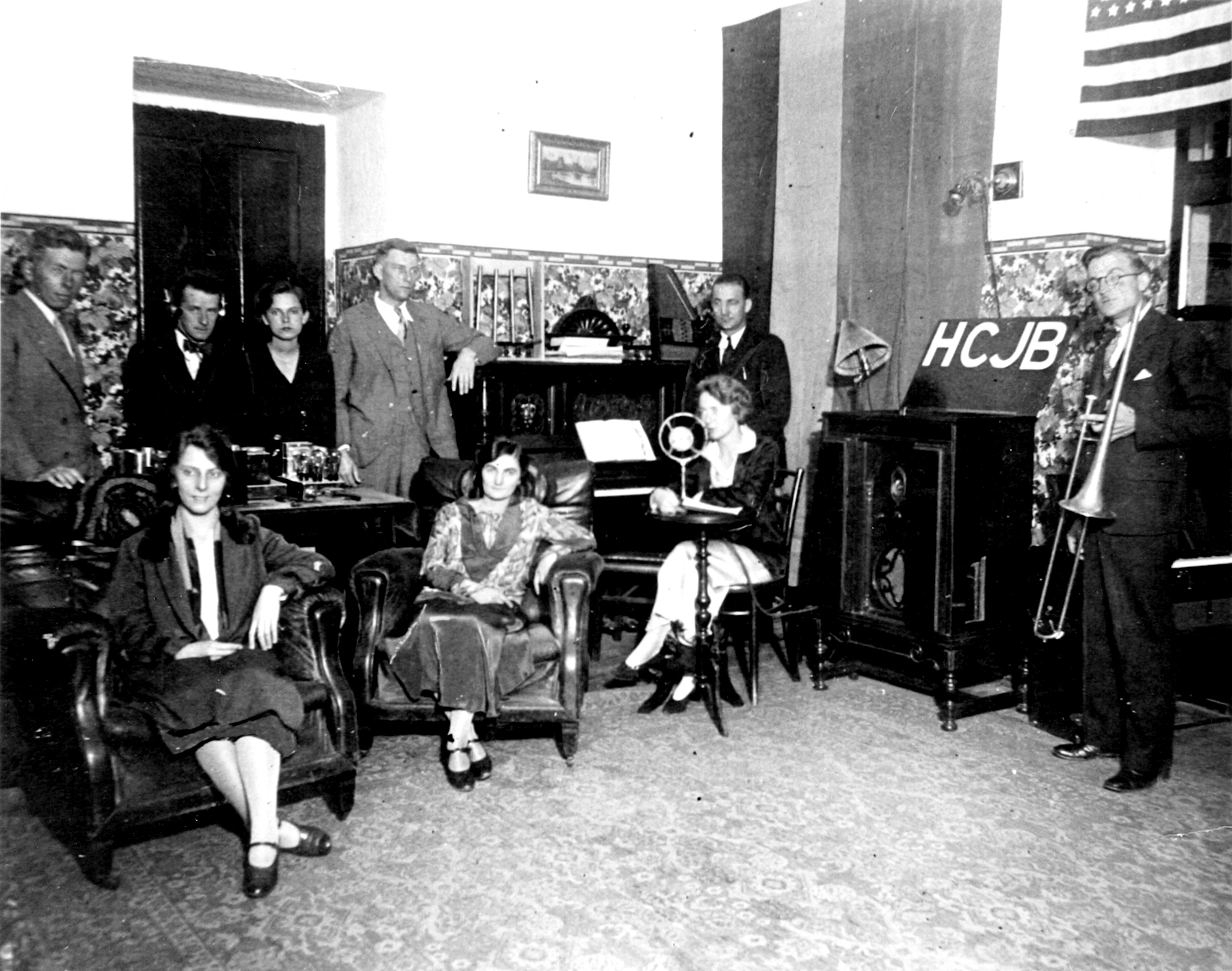 |
December 25, 1931 was a special day in Quito, Ecuador as all of the missionaries (16) along with their children (18) came to “La Quinta Corston” to celebrate Jesus' birth. They had a dinner with two turkeys and two chickens with all of the fixings. They played games and then had a prayer service to end their day together.
That evening a smaller group gathered in the Jones’ sitting room radio studio for a Christmas night program. Edna Figg sang "Great is thy Faithfulness", they sang some Christmas carols in English, had a few solos, Clarence played the trombone and then Stuart Clark gave a short message in English, and Reuben Larson gave the first Spanish message. Together these people launched the first program on Radio Station HCJB.
Both of these Christmas day events, although centuries apart, had humble beginnings. Yet both had the same purpose: to proclaim to the world that Jesus is the Savior.
Writing Home
Because Catherine Jones was expecting, she stayed in Chicago while Clarence and Eric & Ann Williams traveled to Ecuador to set up the station in August, 1931.
Clarence wrote frequent letters home giving rich details of the joys and frustrations of starting a pioneer radio ministry. Clarence also wrote expressing his love and longing for his family to be together once again. This letter written on Dec 30th, 1931 gives details about the Christmas celebration, the first Christmas program and being on and off the air that first week.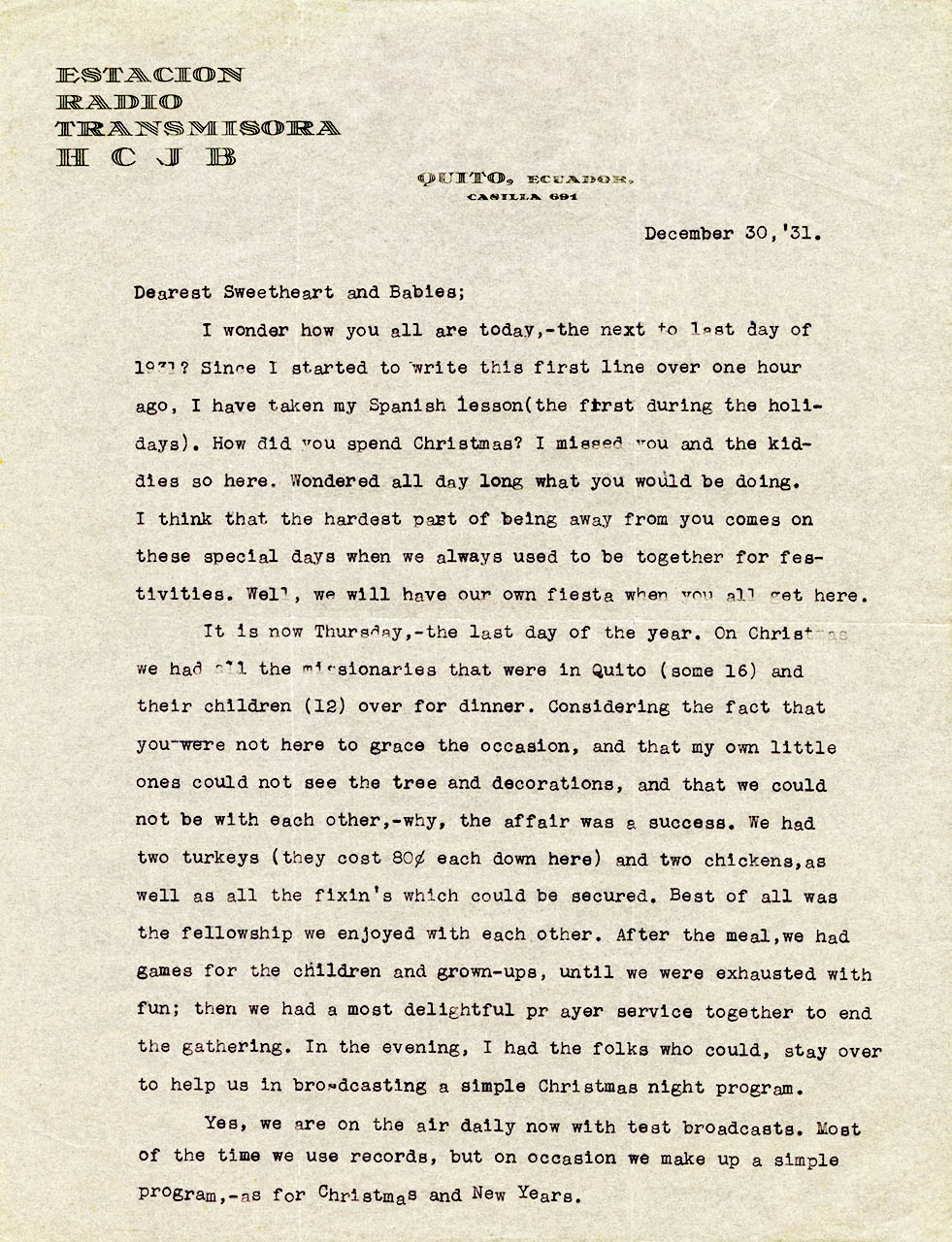
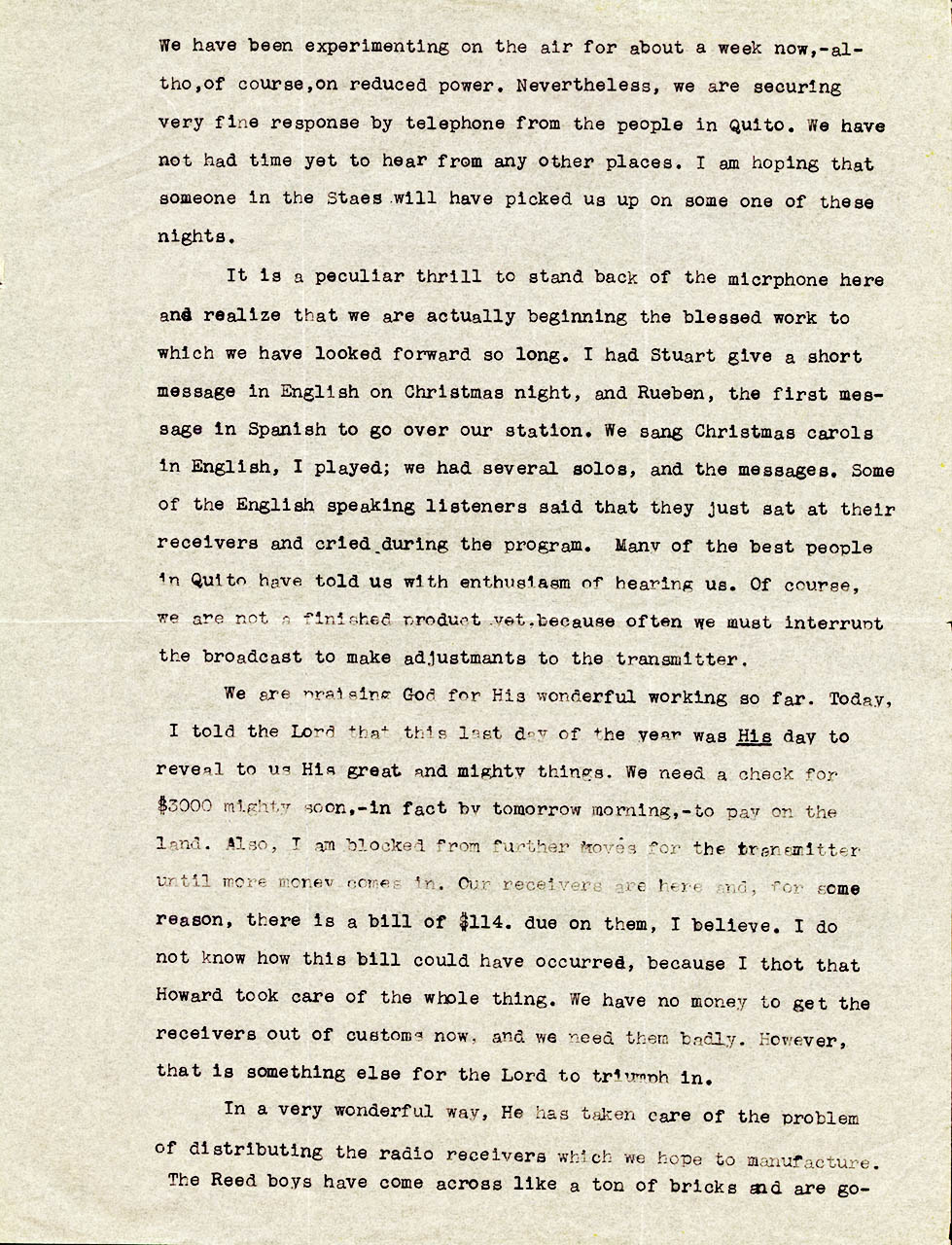
Next: 1932 - The Voice of Quito and the Whisper of the Andes
